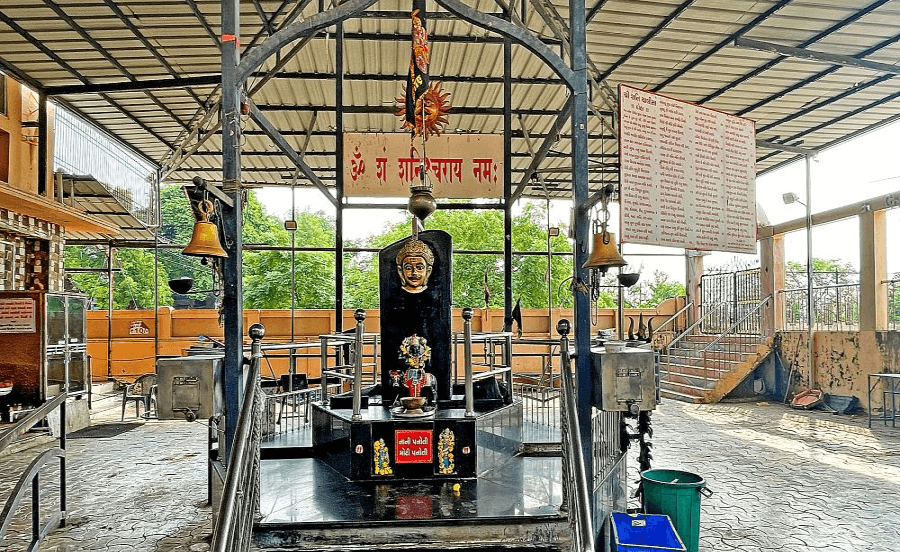
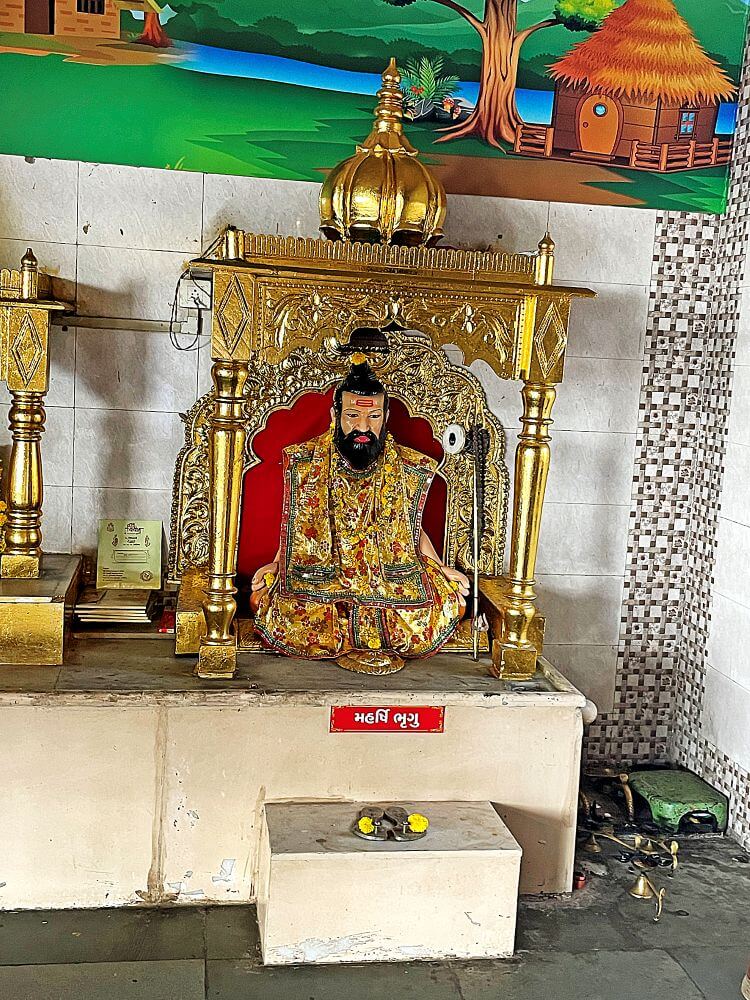 Bharuch, an ancient city situated on the banks of the holy Narmada River, is believed to offer liberation from sins through its mere sight. In ancient times, this city was known as Bharutkaccha and originally as Bhrigukaccha, named after the great sage (rishi) Bhrigu. A temple dedicated to Sage Bhrigu still stands in this city, and it is believed that he wrote the renowned astrological text, Bhrigu Samhita, here. The temple complex also houses shrines of Shani (Saturn), Riddhi Siddhi Vinayak (Lord Ganesha), Jwaleshwar Mahadev (Shiva), and Bhrigu Mahadev (Shiva).
Bharuch, an ancient city situated on the banks of the holy Narmada River, is believed to offer liberation from sins through its mere sight. In ancient times, this city was known as Bharutkaccha and originally as Bhrigukaccha, named after the great sage (rishi) Bhrigu. A temple dedicated to Sage Bhrigu still stands in this city, and it is believed that he wrote the renowned astrological text, Bhrigu Samhita, here. The temple complex also houses shrines of Shani (Saturn), Riddhi Siddhi Vinayak (Lord Ganesha), Jwaleshwar Mahadev (Shiva), and Bhrigu Mahadev (Shiva).
In the tenth chapter of the Bhagavad Gita, during the Vibhuti Yoga discourse, Lord Krishna mentions Bhrigu’s greatness, saying, ‘‘Among the great sages, I am Bhrigu.’’ (Maharsheenam Bhrigur Aham.) Bhrigu Rishi was one of the Saptarishis (seven great sages) and is considered a mind-born son of Brahma, the creator. According to ancient texts, Bhrigu was the first to discover the process of creating fire artificially. His name is derived from the Sanskrit word Bhṛg, meaning the sound or blaze of fire. Initially, Bhrigu resided in what is now the Ballia district of Uttar Pradesh, a region known as Bhrigu Kshetra. Later, he migrated to what is now Bharuch. The Skanda Purana mentions that the goddess Lakshmi once resided here, and it was on the banks of the Narmada River where Bhrigu Rishi established his ashram and meditated for 14 years.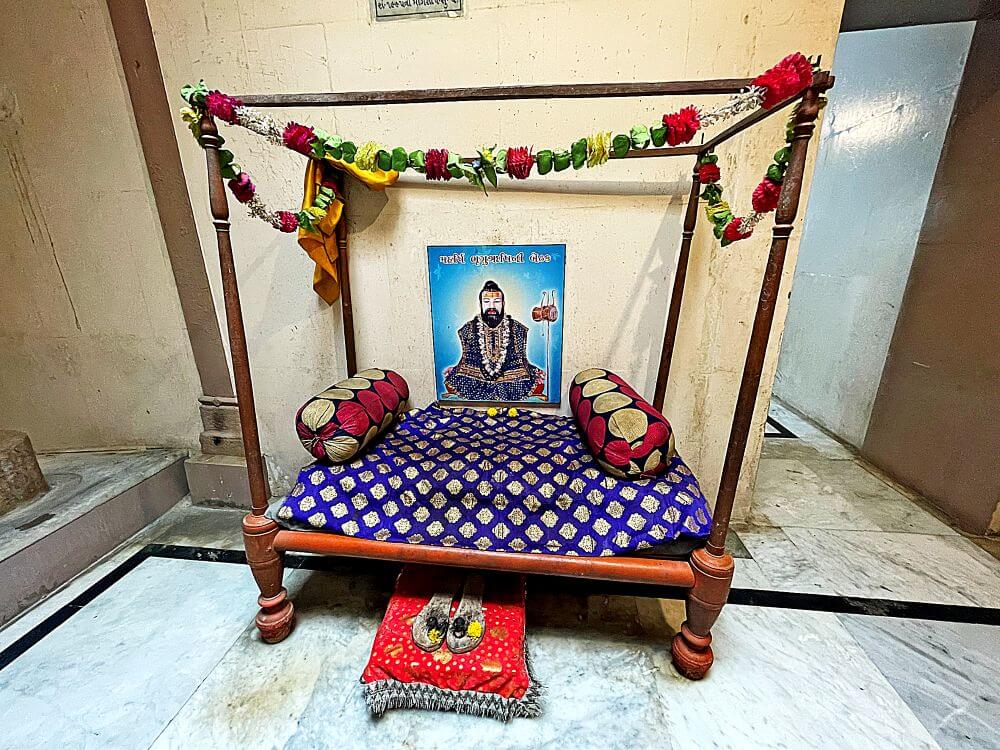
It is believed that during his time here, he wrote the Bhrigu Samhita, a text that contains about 5 million horoscopes, supposedly holding the destinies of everyone in the world.
The Bhrigu Rishi Temple is located in Dandia Bazaar, near the Dashashwamedh Ghat on the Narmada River in Bharuch. According to legend, the mighty King Bali performed ten Ashwamedha sacrifices at this spot, which is why it is called Dashashwamedh Ghat. It is also believed that Lord Vishnu, in his Vamana avatar, appeared here and requested three paces of land as a gift from King Bali. After Bali granted the request, Vamana assumed a gigantic form, covering the heavens with his first step and the earth with his second. With no space left for the third step, Bali offered his own head for the third pace, after which Vamana banished him to the netherworld (Patal Lok). 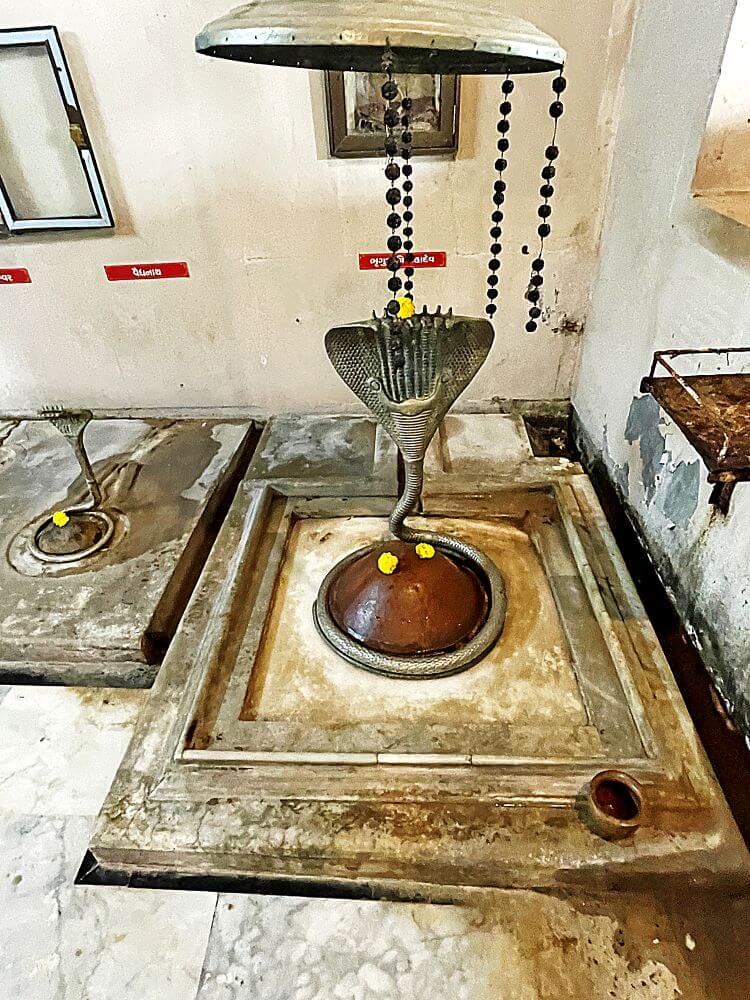 The area around the ghat is home to many temples, including one dedicated to Vamana. A little further away, on a slightly elevated spot in Dandia Bazaar, stands the Bhrigu Rishi Temple. It is said that the temple was built between 1675 and 1686 on the site of Bhrigu Rishi’s ancient ashram, with renovations carried out during the Maratha era.
The area around the ghat is home to many temples, including one dedicated to Vamana. A little further away, on a slightly elevated spot in Dandia Bazaar, stands the Bhrigu Rishi Temple. It is said that the temple was built between 1675 and 1686 on the site of Bhrigu Rishi’s ancient ashram, with renovations carried out during the Maratha era.
The temple’s entrance is a simple gateway, and after climbing a few steps, visitors enter the courtyard. In the open space in front of the temple, covered with paver blocks, there is a metal canopy. Beneath the canopy stands a tall hexagonal pedestal on which a black stone pillar represents Shani (Saturn). A metal mask of Shani adorns the pillar, with a small idol of the deity at its base. This idol has a smiling face, four arms holding a trident and mace, and one hand raised in blessing. Behind him is a figure of his vehicle, a buffalo. On the front of the pedestal are two small shrines dedicated to deities known as Nani Panoti (small misfortune) and Moti Panoti (great misfortune), believed to be Shani’s consorts. Nani Panoti is said to represent a two-and-a-half-year period of hardship, while Moti Panoti refers to the seven-and-a-half-year phase of Sade Sati. It is customary to view Shani from the right side, avoiding direct eye contact.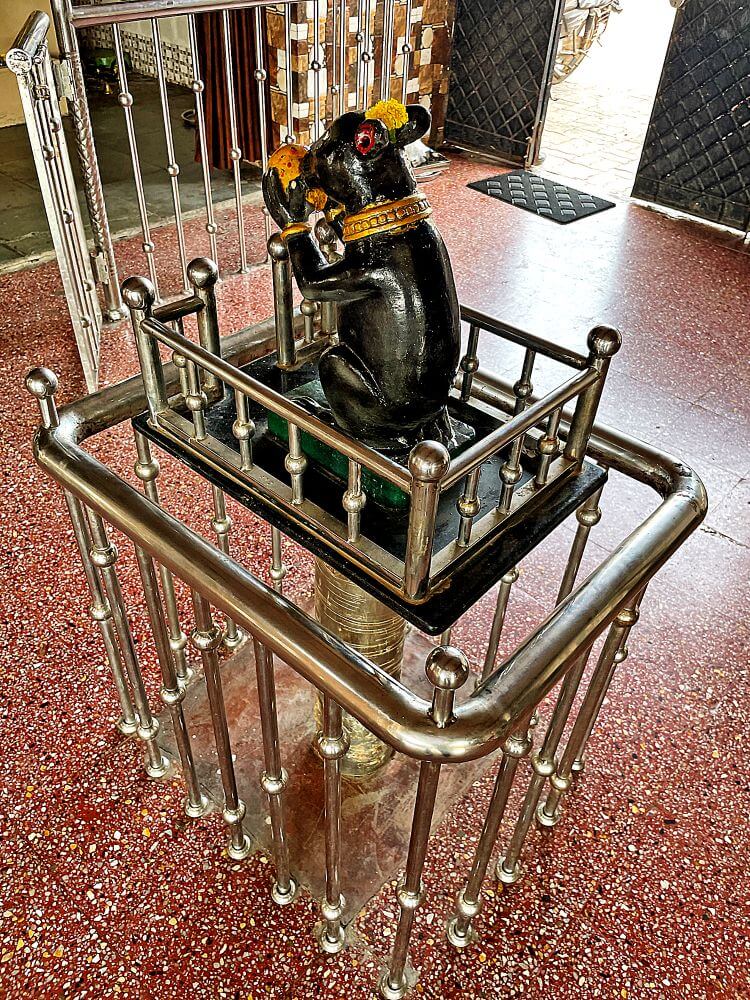
Opposite the temple is an old mansion-like structure with a veranda. Inside one of its rooms is the Bhrigu Rishi Mahadev Temple, where several stone lingas (representations of Shiva) are arranged in a row on a raised platform. These include the Bhrigu Mahadev, Vaijanath, Omkareshwar, Mahakaleshwar, Mallikarjuna, and Somnath lingas, all adorned with metal cobra hoods. In the inner chamber of this temple, there is a seating arrangement (baithaka) dedicated to Sage Bhrigu, with a small cot and cushion, and a large coloured idol of the sage. At the foot of this setup are his silver sandals (padukas). Alongside the wall are stone representations that is lingas depicting the four Vedas. The walls of the temple feature carvings of Brahma, the ten incarnations of Vishnu, Dattatreya, and Varaha. The stone idols of Varaha and Vishnu appear to be ancient.
Adjacent to this room is the Jwaleshwar Mahadev Temple, which houses a brass Shivalinga. The linga is set in a shallow square basin (shalunka), with two carved lions on the edges. A large metal snake coils around the linga, with its hood raised. Beside the linga are a small stone figure of Nandi (Shiva’s bull) and a metal tortoise. Additionally, six smaller lingas are placed on a nearby platform. The temple walls have niches with idols of Lord Rama, Sita, Hanuman, Ganesha, Parvati, Sage Durvasa, Sage Martanda, and Siddhi Vinayak.
Attached to the old temple is a newly constructed building housing the Riddhi Siddhi Vinayak Temple. The main shrine here features elaborately carved golden images of Lord Ganesha flanked by his consorts, Riddhi and Siddhi, seated on a raised platform. In front of the shrine is a stone statue of Ganesha’s vehicle, the mouse. To the left of this shrine are idols of Parshurama, his father Jamadagni, and his mother Renuka. To the right is an idol of Bhrigu Rishi, with silver padukas placed before it.
The temple sees a large gathering of devotees every Saturday, Tuesday, and on special occasions like Sankashti Chaturthi and other festivals. Pilgrims participating in the Narmada Parikrama (a sacred circumambulation of the Narmada River) also visit this temple and the nearby Narmada Mata Temple at Dashashwamedh Ghat. The temple is open to devotees from 7 AM to 8 PM daily.
